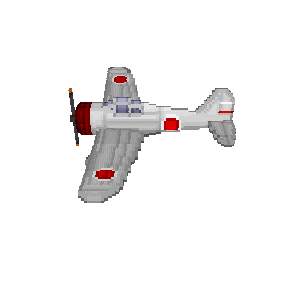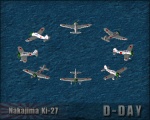Difference between revisions of "Nakajima Ki-27"
From D-day: wiki
| Line 22: | Line 22: | ||
==References== | ==References== | ||
*[http://en.wikipedia.org/wiki/Nakajima_Ki-27 Wikipedia] | *[http://en.wikipedia.org/wiki/Nakajima_Ki-27 Wikipedia] | ||
| + | }} | ||
| + | |||
| + | |||
| + | {{Timeframe | ||
| + | |||
| + | |prewar=yes | ||
| + | |totalwar=yes | ||
| + | |||
| + | |prebc=yes | ||
| + | |earlybc=yes | ||
| + | |midbc=yes | ||
| + | |latebc=yes | ||
| + | |postbc=yes | ||
| + | |totalbc=yes | ||
| + | |||
}} | }} | ||
Revision as of 09:06, 13 August 2014
| ||||||||||||||||
History
The Nakajima Ki-27 was one of Japan's first production monoplanes and was the airforce's primary fighter plane during the beginning of world war 2. In 1935 the Japanese Army started a competition between Nakajima, Mitsubishi and Kawasaki for a new fighter to replace the Kawasaki Ki-10 biplane. The Nakajima Ki-27 even though it was slower than the other planes won the competition because of its superior maneuverability. The Ki-27 was soon out classed by newer enemy aircraft and was soon relegated to training duties. However during the last year of the war the Japanese were using every plane that could fly and the Ki-27 was fitted with explosives and used in Kamikaze missions.
References
. . . .
Time Frames
| 1930 - 1940: Pre-War |
1940 - 1942: Early-War |
1942 - 1944: Mid-War |
1944 - 1945: Late-War |
1945 - 1960: Post-War |
1930 - 1960: Total-War |
|
| Buildable | Yes | Yes | ||||
| Bonus Crate | Yes | Yes | Yes | Yes | Yes | Yes |
. . . .

